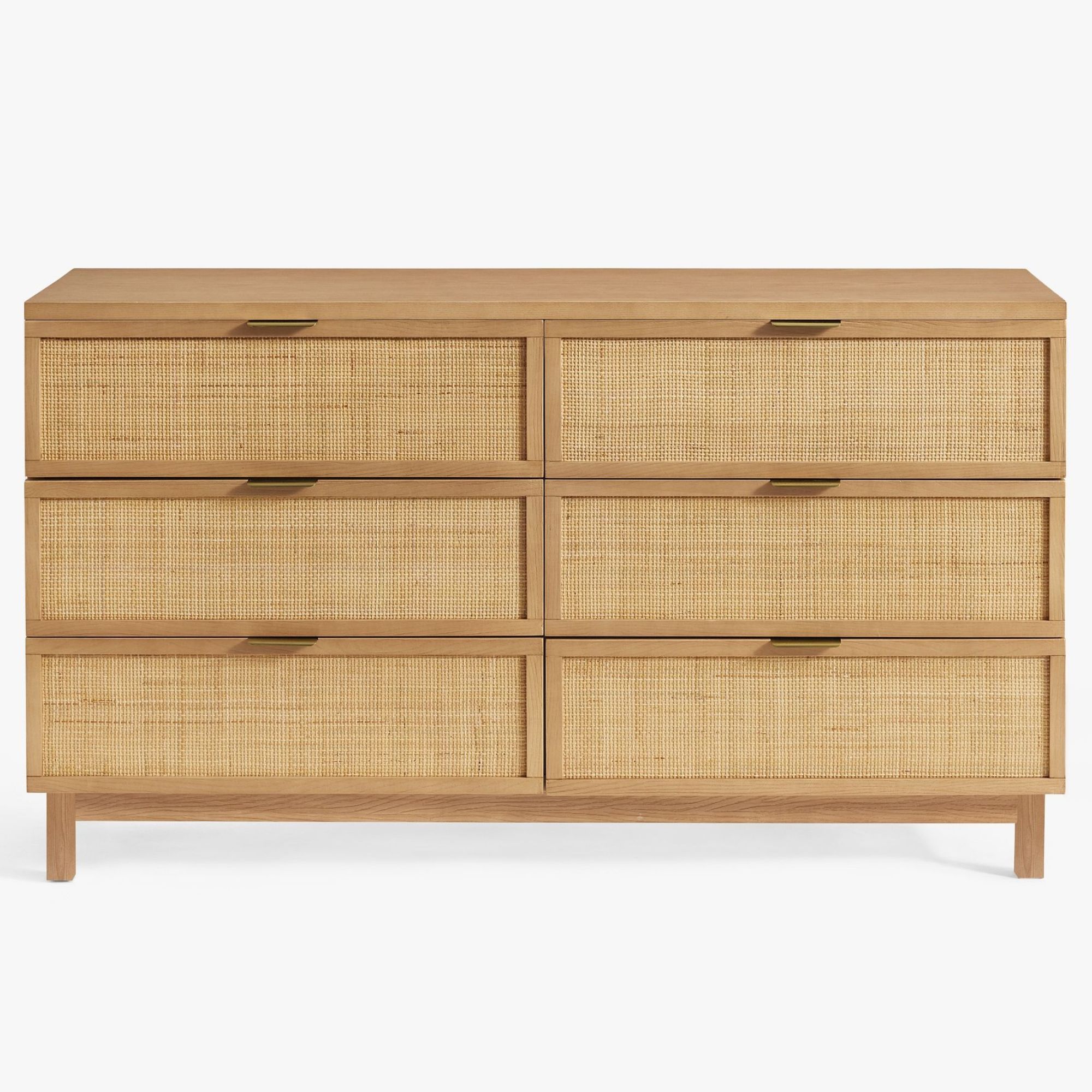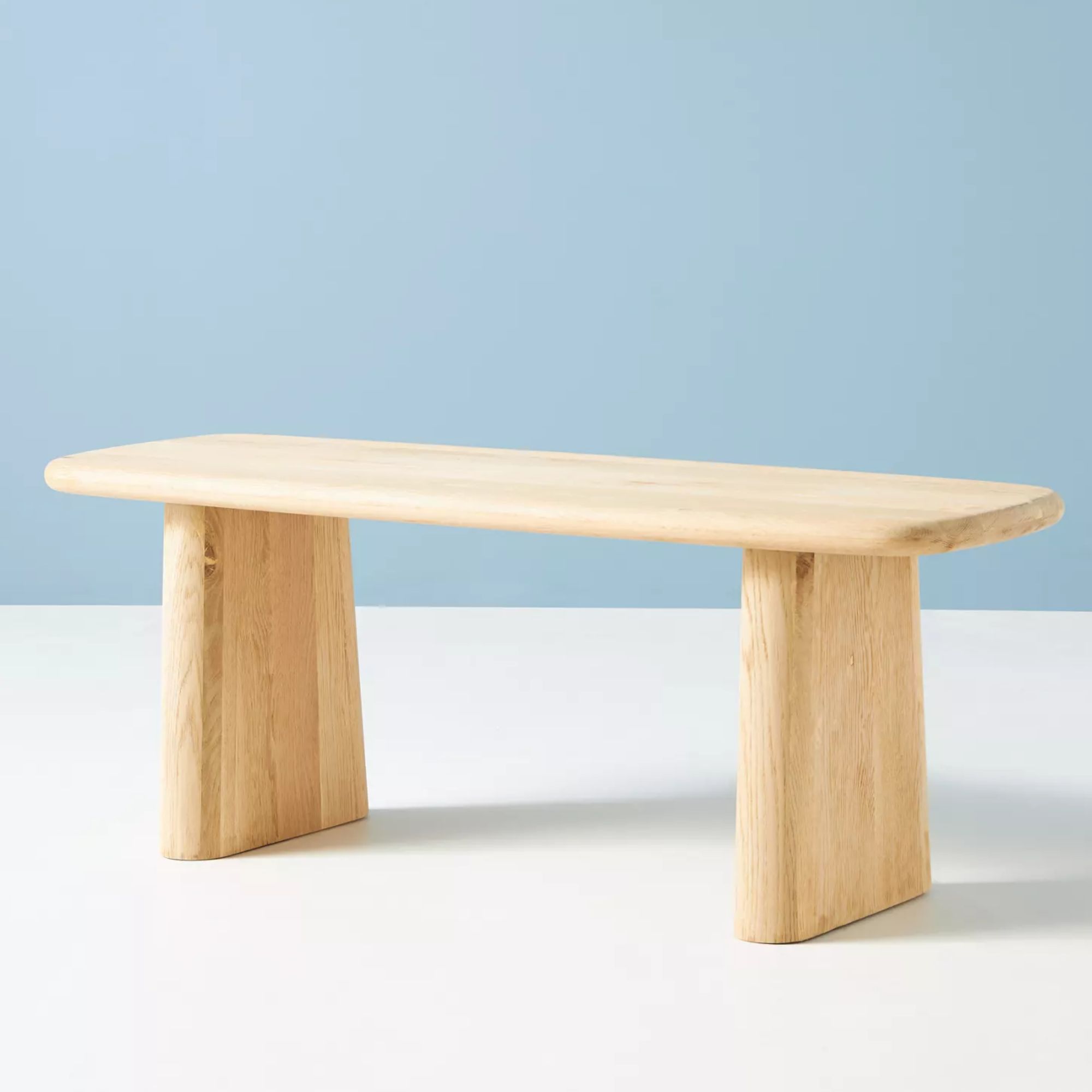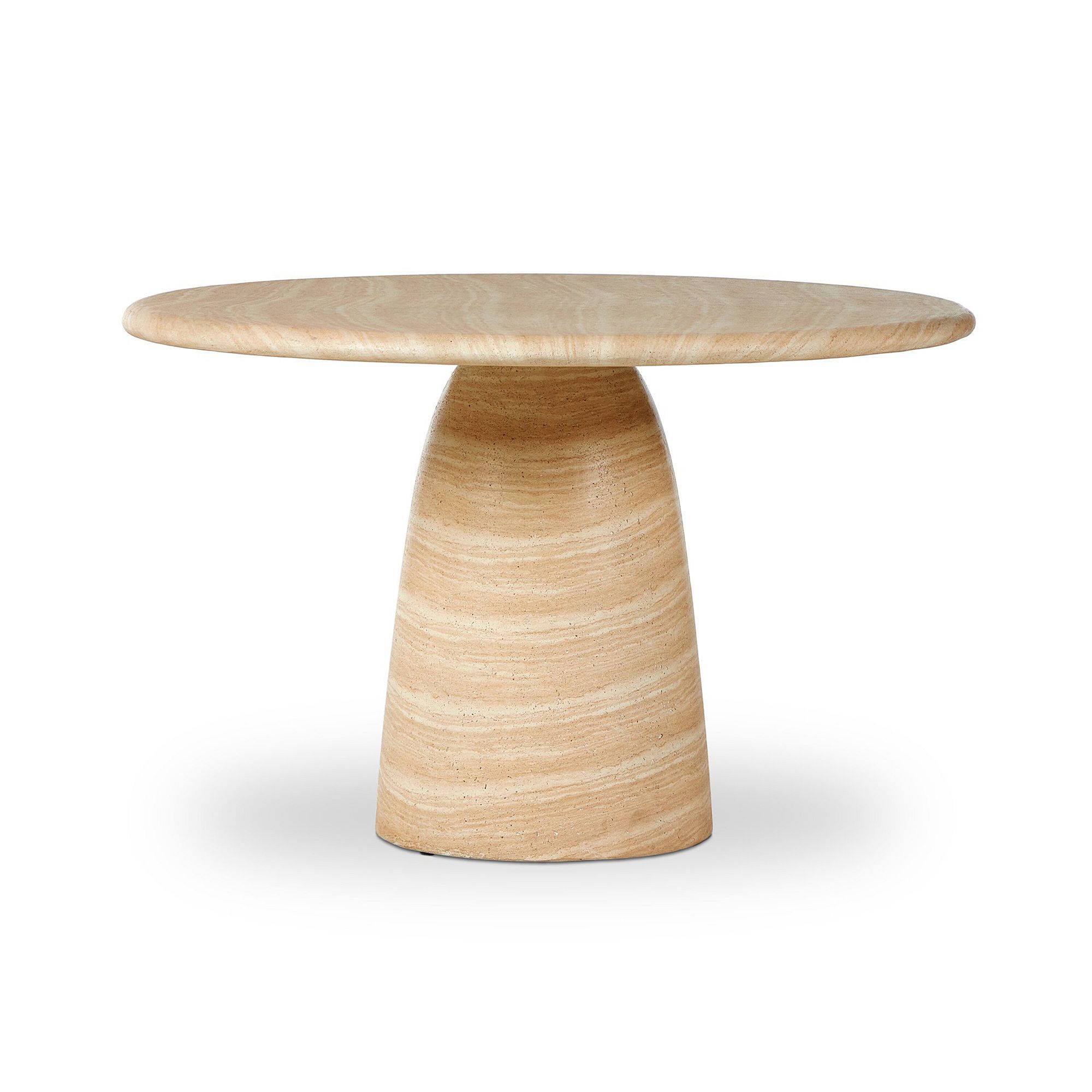How to rearrange a room to make it cooler – 5 clever hacks to try
These tactical room arrangement tips can reduce hot spots and improve ventilation
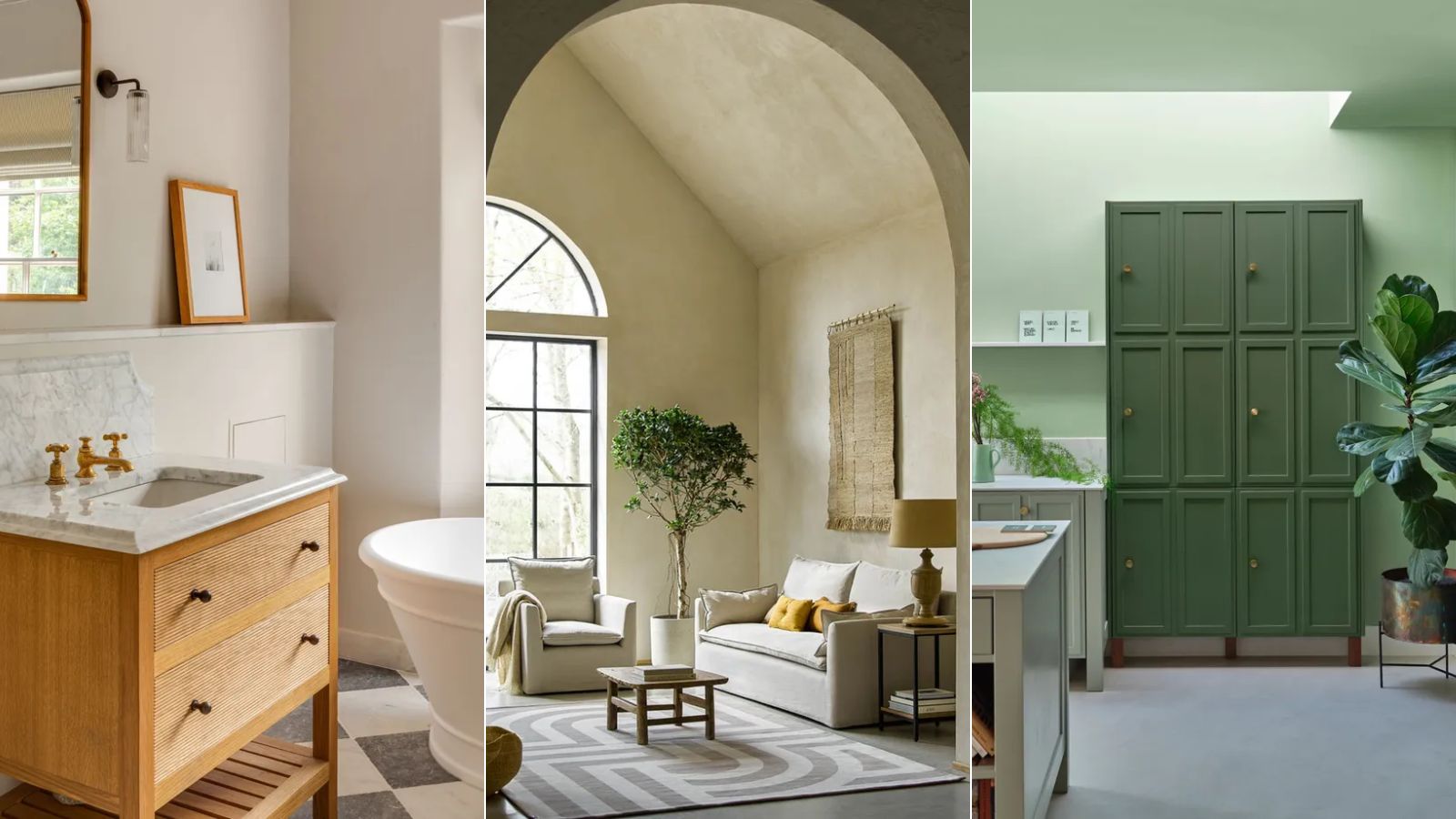

We've all been there – it's the middle of a hot summer day and your home feels like a sauna. While it may be tempting to crank up the AC or turn on your fans, this can be a costly solution to keep a home cool in a heatwave. Instead, incorporating simple tips to rearrange your space can effectively cool down a room without hiking up your energy bills or doing a full remodel.
Surprisingly, the principles here are similar to arranging a room to maximize heat, with proper ventilation, insulation, and tactical furniture arrangement being a few of the key things that can keep any space cool and comfortable.
Below, experts have shared five simple techniques to arrange a room to reduce the indoor temperature, helping you to cut your energy bills in the summer.
How to rearrange a room to make it cooler
'There are a few things you can do to make a room cooler without completely redesigning it,' says Nick Valentino, VP of Market Operations at Bellhop. These include:
- Control airflow: Ensure you don't have any items blocking windows, vents, or ceiling fans, and arrange furniture to enhance ventilation.
- Control light: Rooms that get direct sunlight will be a lot cooler if you reduce heat absorption and block the light out during the hottest part of the day.
'If you can't make the whole room cooler, you can at least make the parts of it that you're using cooler and more comfortable,' recommends Nick Valentino. 'Consider positioning seating options directly under a fan or next to an air vent, and keep them out of direct sunlight.'
1. Design an open layout
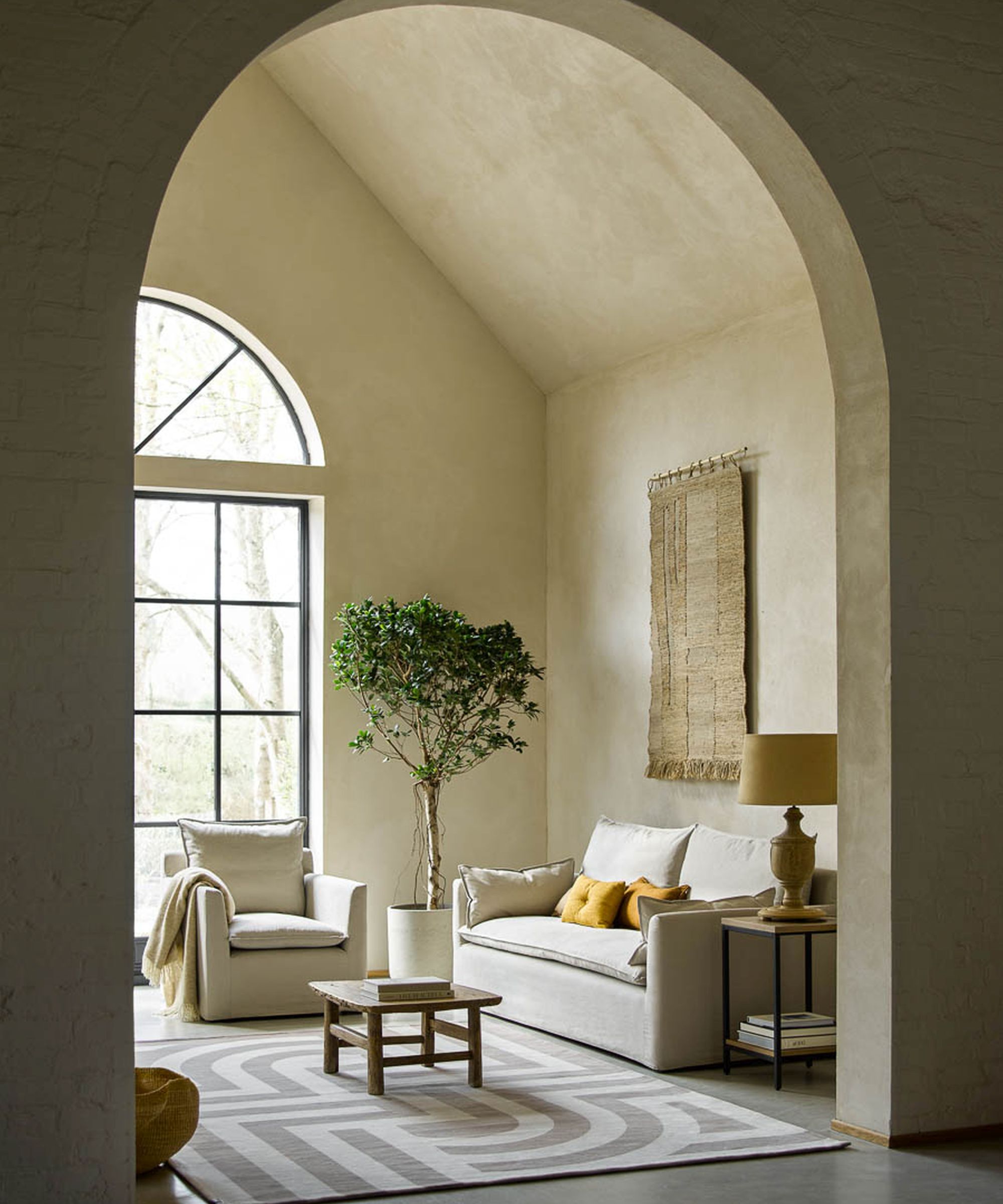
Airflow is essential for keeping a room cool, so it's important to arrange for enhanced ventilation by creating a strategically designed open-plan layout, increasing the efficiency of any cooling system or any fans in the room.
Create a cooling pathway
Enhancing airflow with furniture arrangement will help with natural cooling. Plan your furniture layout to create a pathway for cool air to flow through the room. This can help circulate air and reduce hot spots.
- Ensure that large pieces of furniture, such as sofas, beds, or bookshelves, do not obstruct air conditioning, vents, or windows.
- Leave enough space between furniture and walls for air to circulate.
- Cross ventilation is also important – rearrange your room to create open pathways between vents and windows, allowing breezes to flow when the temperature drops in the evenings.
'These setups can significantly cool a room overnight, reducing the temperature without air conditioning,' says Josh Mitchell, Founder of Air Conditioner Lab. 'Position furniture to create a clear path between opposite windows or doors to encourage a natural breeze.'
Declutter
There is a reason why a minimalist interior style is often preferred in summer over maximalism, and it's not just about aesthetics. By implementing decluttering tips in any space – removing unnecessary furniture and decorative items that might be blocking airflow or absorbing heat – you can effectively cool it.

Josh Mitchell is an HVAC technician and the owner of Air Conditioner Lab.
2. Position furniture away from sunlight
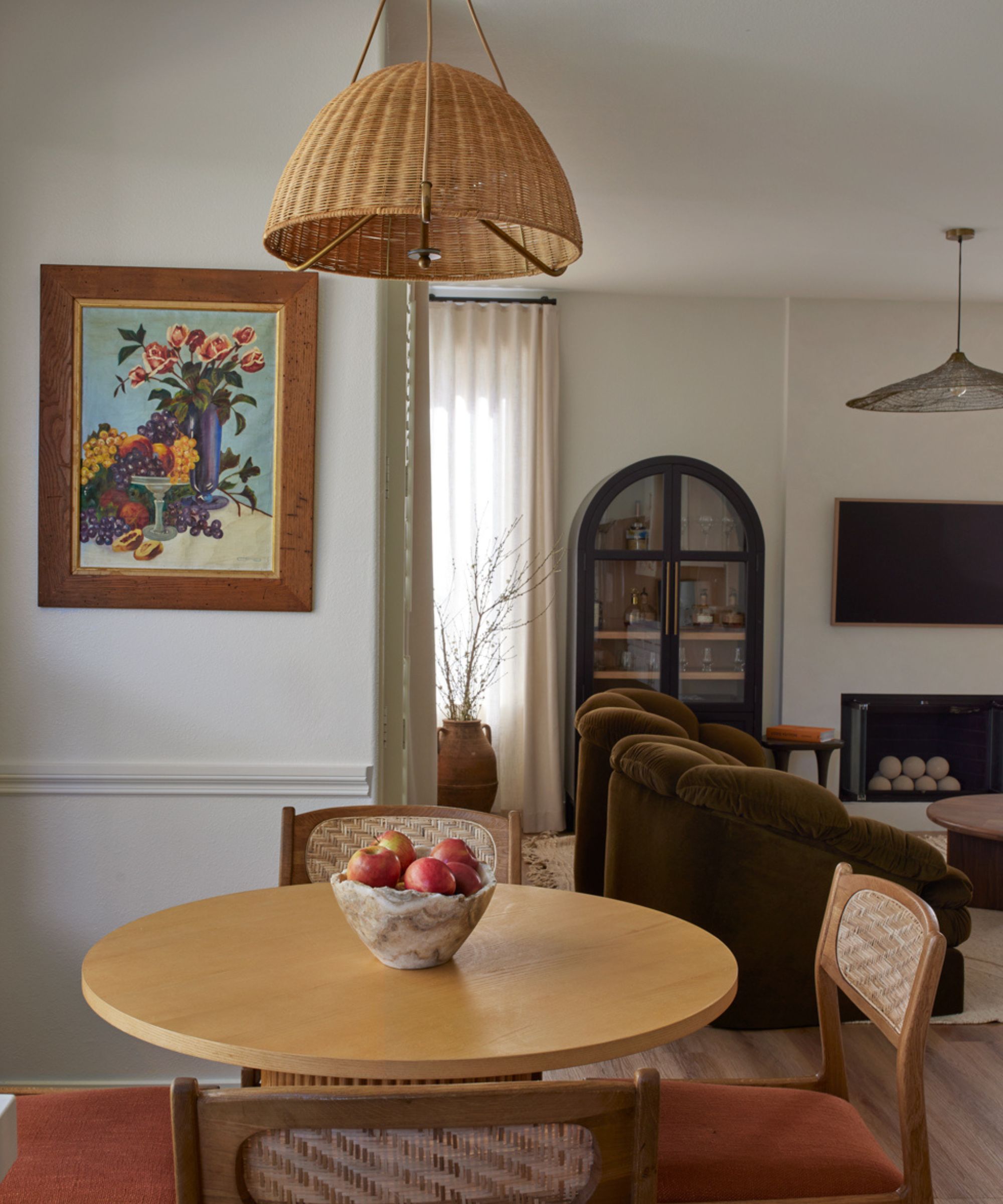
One of the primary sources of heat in most rooms is sunlight entering through windows. Direct sunlight can significantly raise the temperature of a surface, causing it to radiate heat into the surrounding space. While you can always block it with curtains, this will reduce ventilation (plus, you likely don't want to block natural light all day). Hence, a better approach is to minimize heat absorption by making sure your furniture is out of direct sunlight.
Arrange your furnishings according to the direction of sunshine during the day. Take a look at where your windows are located. Direct western sun during the afternoon/evening drives up indoor temperatures the most, so if your space gets sunlight at all points of the day, focus on arranging furniture in the zones that receive this light.
Move furniture out of the path of direct light, especially those with materials that will absorb more heat, such as dark-colored, metal, leather or faux leather, synthetic fabric, or glass furniture. You can use furniture that is less prone to absorb and emit heat from sunlight positioned away from exterior walls to block direct rays. These include light-colored materials, natural fabric, wooden, wicker or rattan, stone, or ceramic furniture. We've chosen some of our top picks, below:
3. Ensure ventilation around appliances
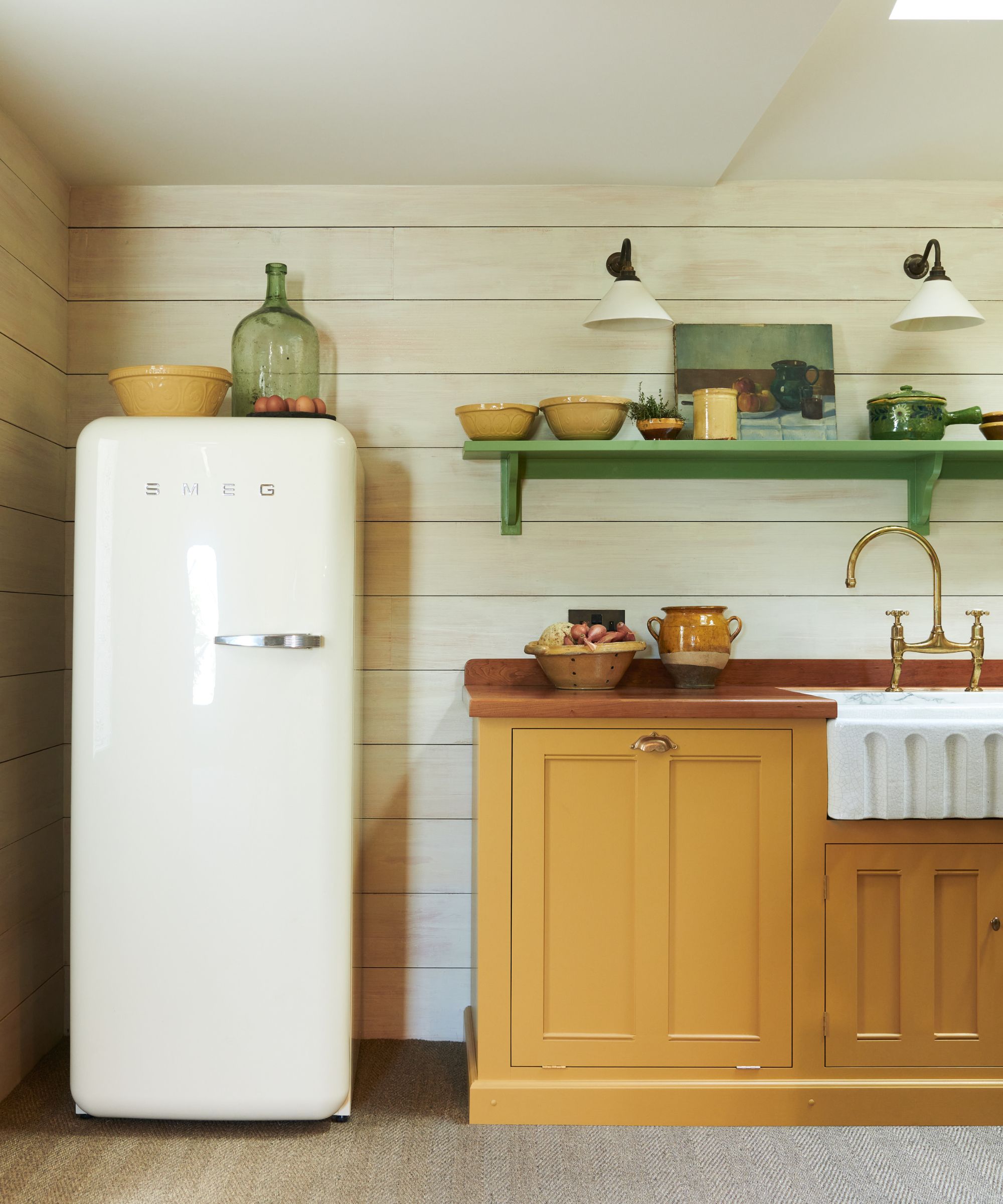
'Electronics and appliances generate heat when operating,' explains Josh Mitchell. 'To cool a space, move electronic devices such as TVs, computers, and gaming consoles away from areas where you want to keep cool.' Additionally, avoid placing heat-generating electronics in areas that can trap heat.
Instead, ensure they have a space around them where heat is generated for ventilation. For example, one of the golden rules to get your kitchen measurements right is leaving a clearance of at least 2 inches behind refrigerators, ovens, stoves, and dishwashers to allow airflow and prevent overheating. The same rule can be applied to other heat-generating electronics.
4. Use reflective and light-colored decor
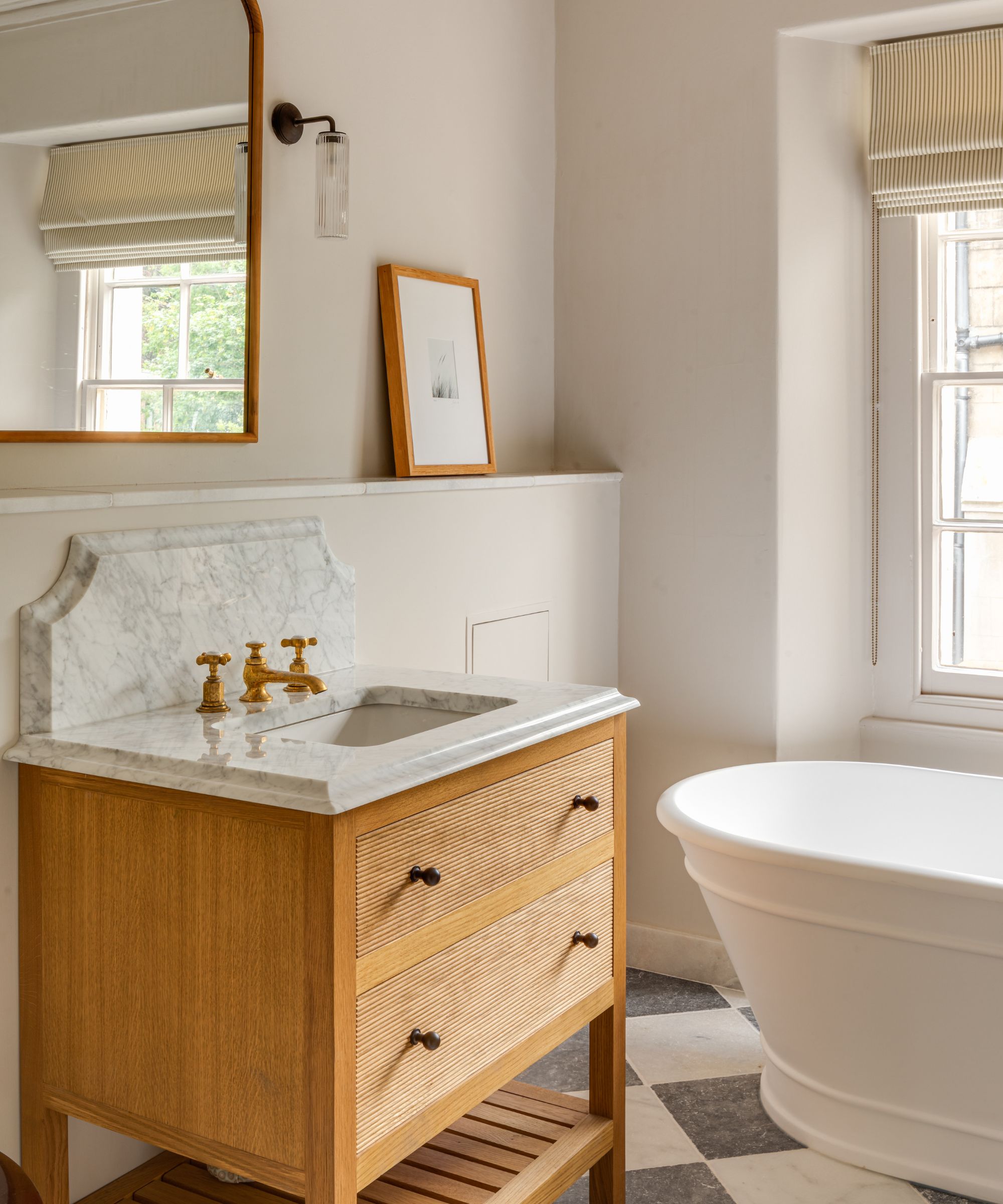
Incorporating colors and materials that reflect rather than absorb and emit heat in sunny spots can help cool a space.
Lighter, matte finishes reflect heat better than dark glossy ones. Rough textures like quarry tile versus slick hardwood will also reflect sunlight instead of radiating it within the space.
In addition to positioning furniture with minimal heat absorption to block sunlight, consider decorating with light-colored and reflective objects where direct sunlight hits, such as wall hangings, drapes, and mirrors. Donia Essid, interior design at Pipcke recommends integrating industrial elements: 'Industrial design items, such as metal furniture, steel fixtures, and exposed brick walls, will ensure a room is cooler while adding a raw, elegant style perfectly suits those looking to add a little urban flair to their interiors.'
5. Incorporate cooling indoor plants
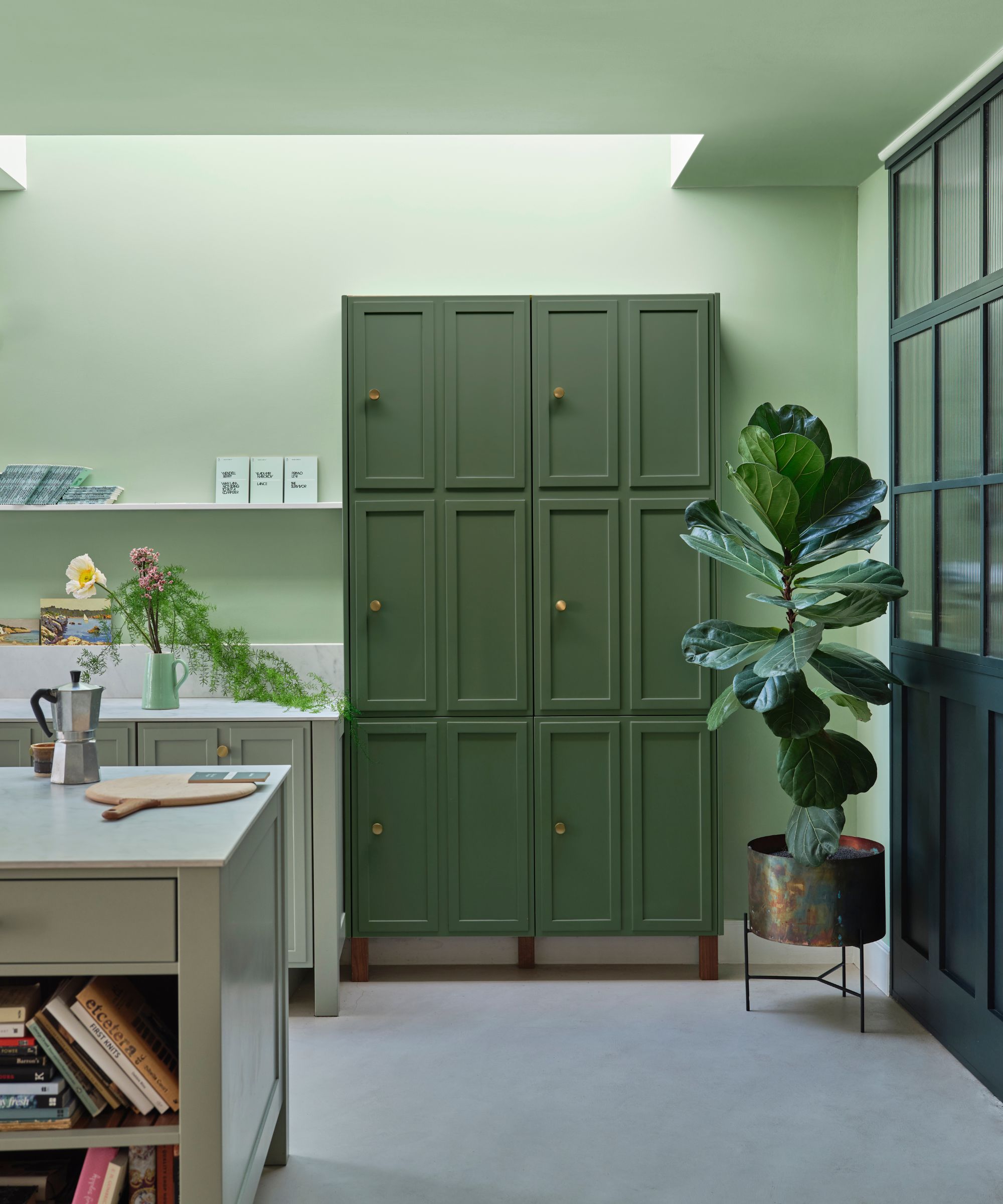
Indoor plants that naturally cool the air – such as aloe vera, ferns, and snake plants – can be placed strategically to improve circulation and provide shade. These plants increase humidity, improve airflow, and reduce stagnation, subtly lowering the room temperature.
'Hang plants from the ceiling or place them on bookshelves near windows to cool the air through evaporative cooling,' recommends Ryan Farley, CEO of LawnStarter. 'Plants take in water through their roots, which then evaporates from the leaves into the air, absorbing heating and cooling the air around plants.
Plants can help break up stagnant air pockets by creating small currents and moving air as they transpire. They can also release moisture into the air, keeping it moving as humidity levels change and air circulates more freely. Position these plants in corners to enhance air circulation throughout the space and reduce hot spots.
Placing plants near windows and around heat sources (like electronics or appliances) can help diffuse and direct airflow, improving circulation. Additionally, keeping them near vents, fans, or air conditioning units can also spread cool air more evenly.
FAQs
What are the best window treatments to make a room cooler?
Light-filtering drapes, such as these Emery linen curtains from Pottery Barn, blinds, or heat control window films, such as these from Amazon, can help keep the space cooler while letting natural light in. If you need curtain ideas, choose those with thin materials and light colors to prevent heat absorption while maximizing natural light.
Reflective blinds or blackout curtains will most effectively prevent heat absorption. However, they may not allow much natural light.
Adjust your window treatments based on the time of day and sun exposure. During the hottest parts of the day, use blinds, curtains, or drapes to block direct sunlight. This will significantly increase the room's temperature.
There are plenty of other ways to ensure your space remains cool beyond how to arrange it. For example, HVAC Technican Josh Mitchell recommends: 'Ensure your ceiling fan is rotating counterclockwise during the summer, which pushes cooler air down. Sometimes, the direction switch is on the fan motor housing. If furniture is arranged so people congregate in certain parts of the room, position the fan directly above this area for maximum cooling effect.'
Sign up to the Homes & Gardens newsletter
Design expertise in your inbox – from inspiring decorating ideas and beautiful celebrity homes to practical gardening advice and shopping round-ups.

Lola Houlton is a news writer for Homes & Gardens. She has been writing content for Future PLC for the past six years, in particular Homes & Gardens, Real Homes and GardeningEtc. She writes on a broad range of subjects, including practical household advice, recipe articles, and product reviews, working closely with experts in their fields to cover everything from heating to home organization through to house plants. Lola is a graduate, who completed her degree in Psychology at the University of Sussex. She has also spent some time working at the BBC.
-
 How to grow crepe myrtle in pots – and transform even the smallest of yards with dazzling flowers this summer
How to grow crepe myrtle in pots – and transform even the smallest of yards with dazzling flowers this summerGrowing crepe myrtles in pots will inject splashes of brilliant color into your outside space
By Thomas Rutter Published
-
 I've spent over 200 hours testing vacuums and swear by my two Dysons – this is how I properly clean a Dyson vacuum filter for longer-lasting appliances
I've spent over 200 hours testing vacuums and swear by my two Dysons – this is how I properly clean a Dyson vacuum filter for longer-lasting appliancesYour Dyson vacuum will last much longer and clean at its best
By Dan Fauzi Published
